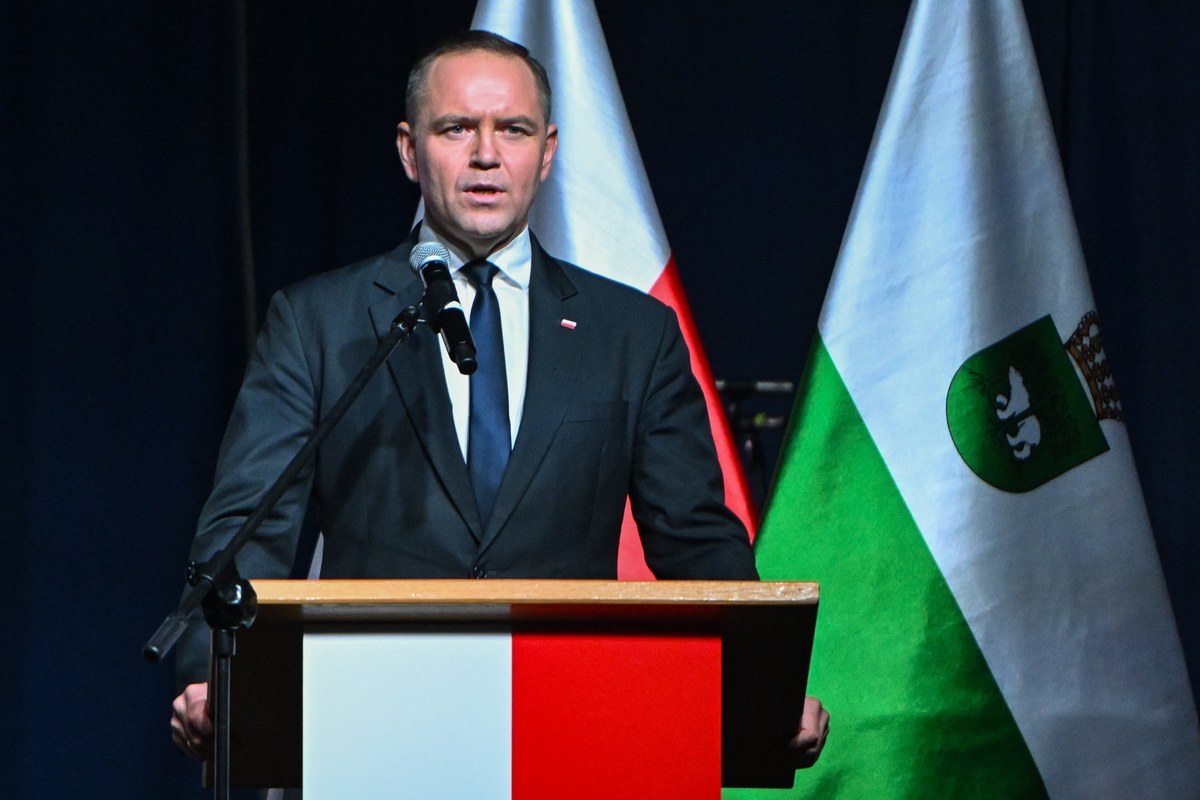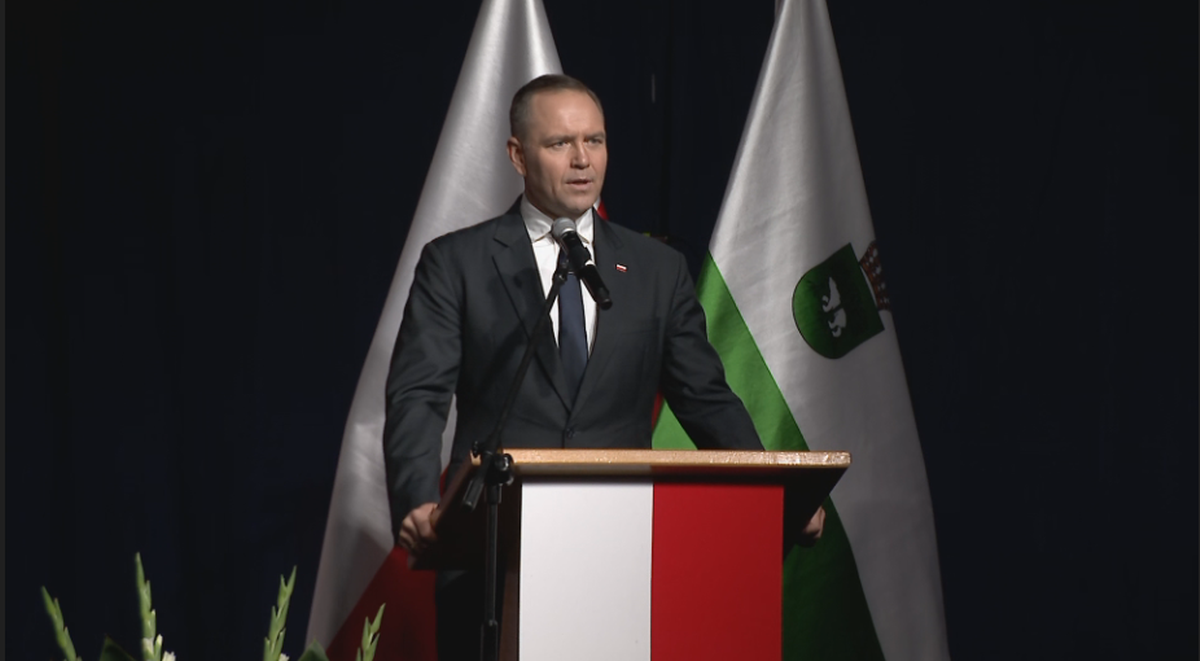
The government has decided to introduce aid for the sale of cereals to farmers who blame their current hard situation on the wide beginning of borders and increased imports of agricultural produce from Ukraine.
The aid worth approx. PLN 2 billion is intended to let to remove about 5 million t of surplus grain from the market. However, experts indicate that this will not solve problems that may reappear in the coming season. The reason for the surpluses and low prices is the national overproduction, which does not compensate for the request for feed, resulting from the low population of pigs. They were besides contributed by imports of Ukrainian grain after the outbreak of the war, but its impact is not as crucial as is widely believed.
According to the Deputy Minister of Agriculture Stefan Krajewski, about 30% of the full surplus grain in the EU is in Poland. It is estimated that there are presently around 9 million tons in Polish warehouses, which, in addition to imports of agricultural produce from Ukraine and the European Green Deal, has been 1 of the indirect causes of agricultural protests taking place in fresh weeks across Poland.
– In colloquially speaking: cereals have besides much, due to the fact that specified current self-sufficiency, or the ratio of harvest to home consumption, is 130–140 percent. So we have an overproduction that exceeds consumption by about 40% and this surplus should be managed somehow. In the short term, export seems to be the only reasonable way, as we cannot rapidly increase home request all year - says Newseria Biznes dr inż. Wiesław Łopaciuk from the Institute of Agricultural Economics and Food Economy – PIB.
As agriculture minister Czesław Siekierski pointed out, the hard situation on the cereals marketplace is presently due, among another things, to the low population of pigs. Feed consumption is simply a dominant component of home demand. Therefore, the ministry intends to advance animal production in the coming time to guarantee a marketplace balance.
– In fresh years, feed consumption has tended to decline or stabilise. This is due to the fact that a twelve years earlier we had a livestock population in the country at a level close to 18 million pieces, while now we have little than 10 million pieces. This reduced the request for feed in pig production, which has not been offset by the increasing request for feed in the poultry or dairy sector for milk production – explains the expert of the Institute of Agriculture and Food Economy.
The outbreak of the war in Ukraine has besides affected this marketplace situation. According to farmers, the effects of the war – in peculiar the wide beginning of the EU's customs borders, including Poland, for the influx of cereals and agricultural produce from Ukraine – contributed to destabilising the Polish marketplace and decreasing prices. According to the data cited by the expert ERIGŻ-PIB, between March 2022 and March 2023 3.3 million t of cereals from Ukraine were placed on the home market, including 2.4 million t of maize and 851,000 t of wheat. About 50–60 percent of exports were exported.
– Import from Ukraine is only 1 origin causing the increase of surpluses in the Polish grain sector. First of all, for respective years we had cereal harvests of 34 to 36 million tons, which, after the addition of first stocks and imports, translated into a very advanced level of home supply, with unchangeable home request – explains Dr Wiesław Łopaciuk. "The war in Ukraine, erstwhile it comes to the Polish cereal market, was manifested primarily in the increasing import of Ukrainian grain to Poland, it mainly afraid maize and to a somewhat smaller degree wheat. However, it should be noted that this import did not grow sky advanced somehow.
The impact of imports from Ukraine, according to an expert, was smaller in the country than is widely believed, but there are clear differences between different regions. The most noticeable phenomenon was in the voivodships straight adjacent to Ukraine or in the voivodships through which trade routes followed the transit of cereals. According to the expert today, the situation with Ukrainian exports seems to be normalised, but it inactive remains a challenge for Polish farmers in the long term, especially in the context of Ukraine's future EU membership.
To remove excess grain from the marketplace and to make it exported even before the coming harvest, the government decided to introduce subsidies. In April, the Council of Ministers adopted a regulation on the basis of which specified assistance would be implemented.
It assumes that farmers who have sold wheat, rye, wheat, cereal mixtures or barley from 1 January to 10 March will receive a payment of PLN 200 per tonne (which means that the aid will be retroactive) in terms of 1 ha of cereal crops, while for farmers who have sold cereals from 11 March and will do so until the end of May this year, 300 PLN to a tonne is planned. The Regulation besides lays down aid rates between PLN 740 and PLN 1620 for cereals sold per hectare of crop area. The funds will be paid by the Agency for Restructuring and Modernisation of Agriculture, which has documentation and information on the state of sowing, and applications for aid may be submitted until 5 June this year.
The government indicated that the aid to farmers resulting from the regulation is temporary, ad hoc and serves to remove surplus cereals from the Polish market. According to the Minister of Agriculture and agrarian improvement Czesław Siekierski, the announcement of its launch has already accelerated the sale and export of home grain in April this year, which gives hope to empty warehouses before the coming harvests.
– It is inactive hard to talk about the coming period and the size of the harvest in 2024, due to the fact that so far we do not have much information, and secondly, winter cereals in the fields have wintered well. There are concerns about certain delays in the sowing of spring cereals, which – like the erstwhile years – can be made up, which has already happened respective times. So we can anticipate another year of good harvest with comparatively unchangeable demand, which means we can stay a surplus market. We have smaller grain imports from Ukraine and even smaller grain imports from another countries – This is Dr. Wiesław Łopaciuk. – So they hope that we will have these surpluses a small smaller, but that will depend on just how much we will be able to export.
As the expert adds, Polish cereals are competitive in the world's markets, which can be demonstrated by the affirmative balance of abroad trade in this segment. We export mainly to EU countries, North Africa and the mediate East.
The Grain marketplace study of April 15, 2024 estimates global cereal production for the 2023/2024 period at 2.3 billion tons. This is the biggest score in history, 2 percent higher than the year before. Including stocks of about 600 million t, this gives a supply of 2.9 billion t, with consumption of 2.3 billion t. The forecasts for the following period supply for further increases in production and consumption.
Continued here:
Polish farmers face a serious problem, among others, through grain from Ukraine










